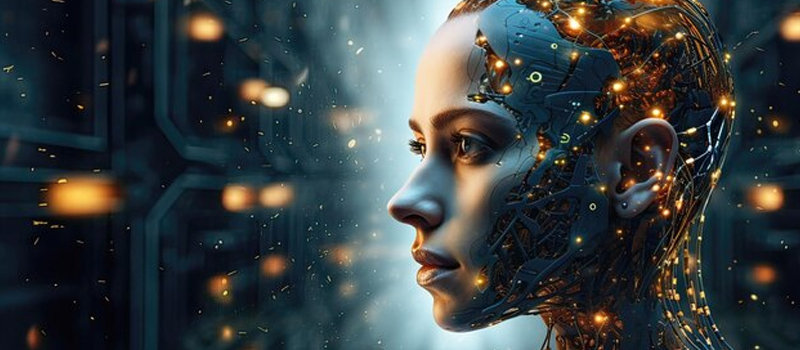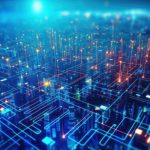 The rise of generative AI has captivated our imaginations, transforming how we work, how we create, and how we interact with technology. Yet, this technological revolution comes at a cost, one that often remains hidden behind the scenes — the immense power consumption of high-density data centers. As generative AI models continue to evolve, the demand for more computational resources surges and the power-intensive nature of these models pose significant challenges for traditional centralized power infrastructure.
The rise of generative AI has captivated our imaginations, transforming how we work, how we create, and how we interact with technology. Yet, this technological revolution comes at a cost, one that often remains hidden behind the scenes — the immense power consumption of high-density data centers. As generative AI models continue to evolve, the demand for more computational resources surges and the power-intensive nature of these models pose significant challenges for traditional centralized power infrastructure.
The Power-Intensive Nature of Generative AI
The advancements in hardware, large-scale datasets, and sophisticated algorithms have ushered in a new era of generative AI, enabling models like ChatGPT to deliver remarkable outputs in mere seconds. To understand and generate data at human-like levels, generative AI models rely on deep neural networks with numerous layers and parameters, requiring substantial computational resources in the form of GPUs and specialized hardware accelerators.
The complexity and capability of generative AI models are directly proportional to their power consumption, leading to environmental concerns and operational challenges for data centers. With this increased sophistication comes more and more power needed — and quickly.
Traditional data centers, designed to handle lower rack densities, are currently struggling to meet the power demands of high-density devices like GPUs. This inadequate power availability results in underutilized rack space, higher operational costs, scalability issues, and challenges attracting new tenants.
To accommodate energy-intensive AI workloads, data centers must undergo significant modifications, including power distribution system upgrades, deploying new cooling technologies, and rethinking physical space arrangements. This retooling process is critical for data centers to allocate resources efficiently without overloading the aging power infrastructure.
Distributed Energy Solutions: The Way Forward
The aging infrastructure of the traditional electrical grid is a growing concern in the face of the intense power demands of modern data centers. Many components of the existing grid were designed and implemented decades ago when the power requirements of data centers were significantly lower. With the exponential growth in data processing demands, the grid’s capacity limitations are increasingly evident. It was never designed to handle the enormous power densities that next-generation GPUs and power-hungry high-performing storage systems demand.
This discrepancy between the aging grid’s capabilities and the soaring power needs of data centers has raised doubts about its ability to provide the reliable and scalable power required to support the ever-expanding digital landscape. As a result, data centers are turning to alternative power solutions, such as distributed energy systems like microgrids, to ensure their operations remain sustainable and resilient in the face of these power constraints.
Distributed energy solutions provide localized power generation and distribution, offering benefits like increased resilience, reliability, and the potential for sustainable energy generation.
These solutions not only benefit the environment but also safeguard against disruptions caused by centralized power infrastructure limitations.
Microgrids present a unique opportunity to revolutionize the power infrastructure of data centers. By integrating them, data centers can swiftly adapt to the surging energy demands of AI workloads without waiting for extensive substation or transmission upgrades. This flexibility allows developers and colocation providers to efficiently scale their capacity to meet the higher power requirements of GPU workloads.
The introduction of these new technologies opens the door to a groundbreaking power ecosystem for generative AI workloads. It not only reduces the carbon footprint on Day 1 but embraces distributed energy solutions and positions data centers for future sustainability and the potential utilization of green hydrogen.
While critically important, this shift toward distributed energy solutions is not just about the environment; it’s about ensuring the data centers of tomorrow are equipped to handle the increasing demands of AI and high-performance computing workloads.
Power as the Great Equalizer
An industry like data centers is highly dependent on power for scalability and sustainability. The ability to meet the escalating power demands of modern workloads is essential for ultraefficient and sustainable operations.
As AI, machine learning, and high-performance computing workloads rise, traditional data center models are finding it increasingly challenging to keep pace. Scalable power solutions have become paramount, not just to meet energy demands but also to leverage the strengths of distributed energy technologies such as microgrids. Instead of seeing power as a limitation, it’s time to recognize it as the driving force behind innovation and growth. Such a transformation allows businesses to thrive in an ever-changing market.
The decline of traditional data centers is evident as they grapple with unprecedented power challenges. By adopting distributed energy solutions, we’re not only building a sustainable and resilient power infrastructure but also ensuring that these centers remain at the forefront of technological advances. As we gear up for a future powered by AI, machine learning, and high-performance computing, it’s evident that a shift from conventional power strategies is not just beneficial but essential. Only then can we truly propel innovation and steer toward a future where technology and sustainability coexist.

Article by: Jeff Barber, VP of Global Data Centers at Bloom Energy
Jeff Barber is the VP Global Data Centers for Bloom Energy. In his role, he is dedicated to empowering data center developers, tenants, and operators to take control of all their data center power requirements with greener, more reliable, more resilient, and more predictable on-site power via fuel cells from Bloom Energy.







